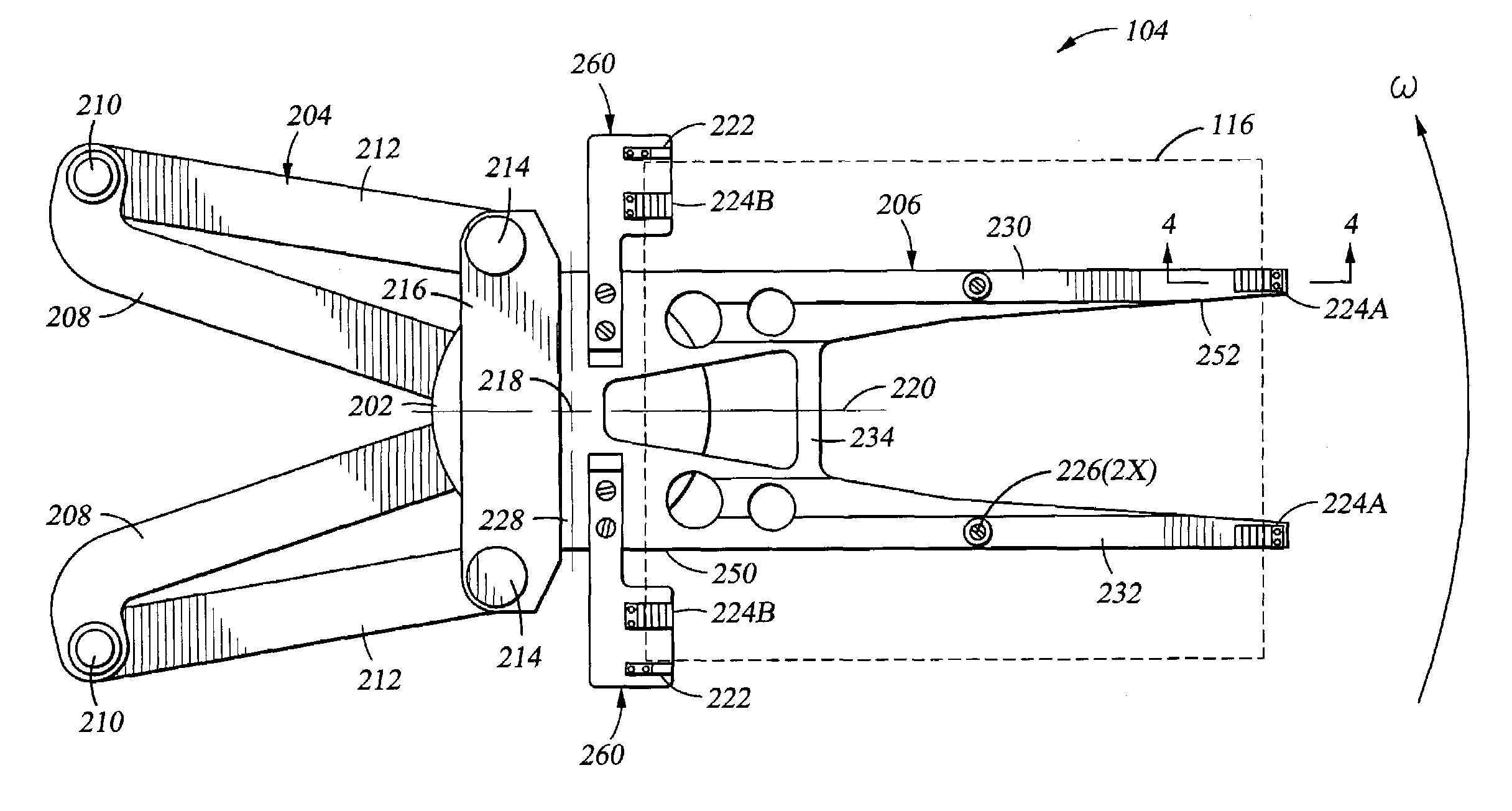End effector assembly for supporting a substrate
a technology of end effector and substrate, which is applied in the direction of charge manipulation, hoisting equipment, furnace, etc., can solve the problems of undesirable melted rubber stuck to the backside of the substrate, several high temperature rubber compounds available, and the conventional transfer robot is not suited for such high temperatures. , to achieve the effect of enhancing the capture of the substrate and minimizing the slippage of the substra
- Summary
- Abstract
- Description
- Claims
- Application Information
AI Technical Summary
Benefits of technology
Problems solved by technology
Method used
Image
Examples
Embodiment Construction
[0019]FIG. 1 depicts a schematic layout of a cluster tool 100. The cluster tool 100 generally comprises a transfer chamber 102 having a first transfer robot 104 disposed therein. The transfer chamber 102 is surrounded by a plurality of processing chambers 106, a thermal processing chamber 108 and at least one load lock chamber 110. The load lock chambers 110, two of which are depicted in FIG. 1, are generally coupled between the transfer chamber 102 and a factory interface 112. One cluster tool that may be adapted to benefit from the invention is available from AKT, Inc., a wholly-owned division of Applied Materials, Inc., located in Santa Clara, Calif.
[0020]The factory interface 112 generally includes a second transfer robot 114 that transfers substrates 116 between the load locks 110 and a plurality of wafer storage cassettes 118 coupled to or disposed within the factory interface 112. The second transfer robot 114 may be configured similar to the first transfer robot 104 describe...
PUM
 Login to View More
Login to View More Abstract
Description
Claims
Application Information
 Login to View More
Login to View More - R&D
- Intellectual Property
- Life Sciences
- Materials
- Tech Scout
- Unparalleled Data Quality
- Higher Quality Content
- 60% Fewer Hallucinations
Browse by: Latest US Patents, China's latest patents, Technical Efficacy Thesaurus, Application Domain, Technology Topic, Popular Technical Reports.
© 2025 PatSnap. All rights reserved.Legal|Privacy policy|Modern Slavery Act Transparency Statement|Sitemap|About US| Contact US: help@patsnap.com



